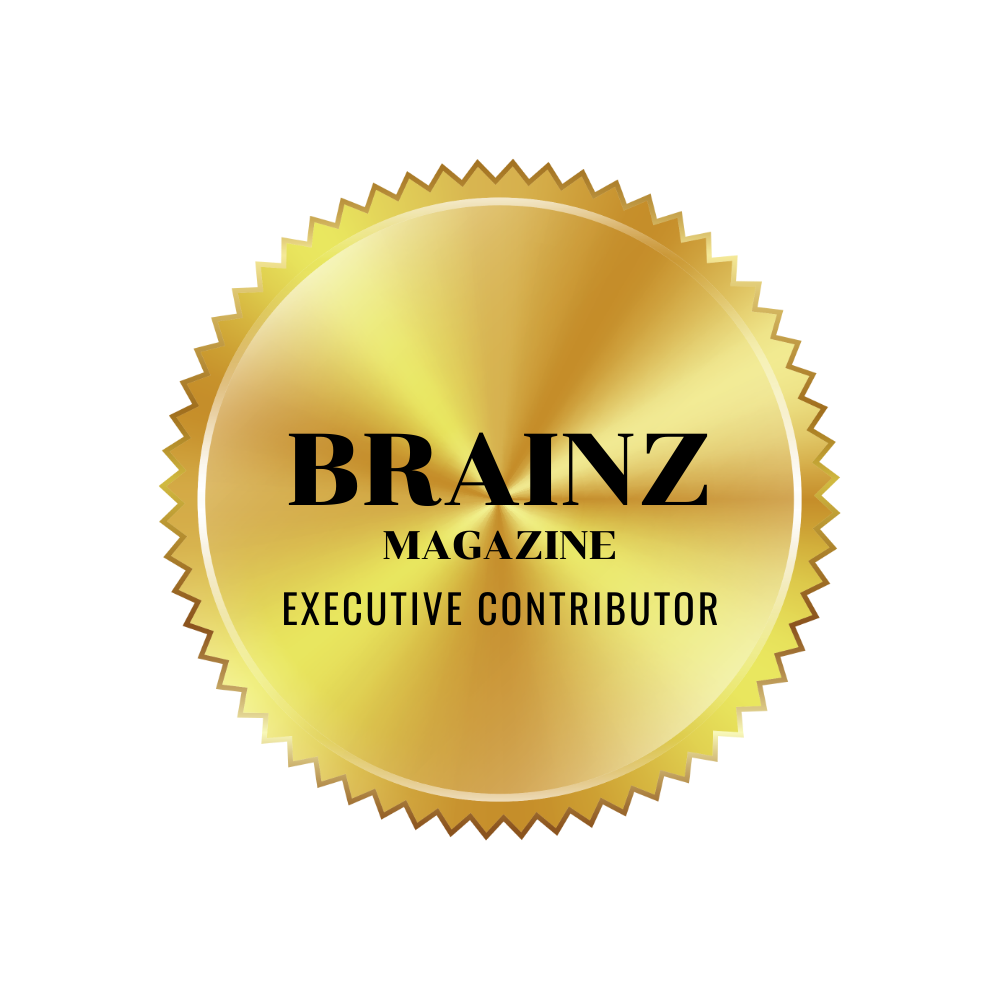
by Julia Felton | Jul 13, 2011
There is so much that horses can teach us about life. Horses have been described as “authenticity meters” and in my experience this is so true. They see beyond the mask that we put on and through to the real core of the person. They know when someone is frightened or in need of support, and when someone is overly aggressive. Horses allow, and expect us, to be who we truly are. They will not tolerate the mask that humans so often feel forced to put on in order to protect themselves.
I am reminded of an experience with a young lad, we shall call him Tom. Tom had been excluded from school for his aggressive behaviour. The teachers described him as being out of control and he bullied the other children. It took only a few sessions with a horse for Tom to realise that in order to connect with a horse he needed to let go of this mask. He needed to expose the young, frightened lad beneath and know that everything would be alright. Tom learnt it was ok to show his emotions and soon realised that acting tough had not been serving him well.
Horses act as mirrors reflecting back to us what we otherwise choose not to see. We all understand that we have different perspectives on the world and see the same thing in different ways, yet ironically we can only see what we already have in our frame of reference. If we experience the horse as angry and aggressive, it is likely that there are similar emotions that we have running through our lives. Horses allow us the opportunity to experience firsthand what is happening to us and by providing immediate feedback they allow us to change our actions to get a different result. How often does that happen in life? And importantly horses are non-judgemental. They just respond to the energy and intent shown to them. For children, I have found that often when faced with a horse the child’s whole persona can change as the real child that has been hiding behind that conditioned mask emerges. This can be a joyous experience for both children and parents. AHA! Moments occur and the children, and parents, get some real insights into what is happening for them.
So why is Horse Assisted Coaching so powerful? Well the answer lies in the fact that many traditional programmes focus on a verbal, classroom (neo-cortex) approach. Whilst this clearly has a role in society I have found that Horse Assisted Coaching sessions achieve a deeper, more sustainable and faster impact on creating change. This is achieved by doing, what is known as limbic learning, therefore there is no integration required. Examples of limbic learning are riding a bike, learning to walk etc. Once we have learnt to do these we do not forget.
Typically no riding is involved in a Horse Assisted Coaching session. Generally, all the work is done on the ground with the participants leading the horses through a series of exercises that help give them insight into such diverse topics as:
- The importance of being a great leader. If you can’t lead a horse and get him to follow you, how can you expect a team to follow you? Importantly, how can you lead others if you can’t lead yourself
- How body language and voice tonality help you influence others. With no words participants need to influence the horse to move using their own resources and what state you are in definitely influences the outcome.
- Value of teamwork. In this ever-connected society there is a real need for being plugged into the system in order to succeed. Alliances and partnerships will become more commonplace so participants learn how to contribute to a team and work towards a common goal.
- The importance of focus and intent because if you are not clearly focused and know what you are doing then horse will not follow you.
Sessions can be run in a group format or one on one depending on the client’s requirements. Horses can also be used to develop family constellations and these in the past have been shown to be very powerful.
So if you are looking for a fun, innovative way to have a break through with your clients then please do not hesitate to contact me. connect@connect-thru-horses.com
Julia Felton (aka The Business Wrangler) is the founder of Business HorsePower. Business leaders, entrepreneurs and executives hire her to accelerate their business performance by harnessing the energy of their people to work more collaboratively together. By aligning purpose with actions the team achieves exponential results as everyone starts pulling in the same direction.
Julia believes that business is a force for good and through designing purpose-driven businesses that leverage the laws of nature, and the herd, you can create businesses founded on the principles of connection, collaboration and community that make a significant impact in the world.

by Julia Felton | Jul 3, 2011
What Controls Your Decisions was just one of the themes covered by Tony Robbins, a key-note speakers at the National Achievers Congress which is being held at the ExCel Centre this weekend. Tony spoke for an incredible four hours. I’d never heard him speak before and he was inspiring. How he maintained his energy levels for that long I’ll never know. I was exhausted just being in the audience.
A key message from Tony’s presentation was that our state, along with our blueprint of life, governs everything we do. It affects our decision-making in ways we could never imagine. Tony got us to do a load of exercises trying on different physiologies and the really interesting thing was that with over 7,000 people from a number of different countries in the audience we all immediately knew what physiology to adopt to be in a particular state. For example, for the frightened child state we all make our posture small and crouched, we dropped our energy and lowered the pitch of our voice. We breathed shallowly and approached other people gingerly, from the side and not from the front.
The exercise reminded me of how well my horses can read my physiology. They know my state often before I do. As master readers of body language they are acutely aware of what is happening in their environment and how things and people show up. They need to be in order to survive. So I’m writing this blog sitting in a field with my horses. After such a motivating and inspiring weekend I’m in a great state and guess what my horses are all crowded around me. My energy is great and they want to be with me. Trust me this is not usual behaviour for them, typically they graze far away from me when I sit in the field with them. Watching the sun set and listening to the birds tweet, whilst a deer bounds through the field I’m really happy. Tony explained that we are happy when our life conditions and blueprint for life are aligned whilst depression occurs when we feel helpless to change the disconnect between our life conditions and blue print.
So my questions for you this week are what makes you really happy and how are you influencing your state so that you can make better decisions?
Julia Felton (aka The Business Wrangler) is the founder of Business HorsePower. Business leaders, entrepreneurs and executives hire her to accelerate their business performance by harnessing the energy of their people to work more collaboratively together. By aligning purpose with actions the team achieves exponential results as everyone starts pulling in the same direction.
Julia believes that business is a force for good and through designing purpose-driven businesses that leverage the laws of nature, and the herd, you can create businesses founded on the principles of connection, collaboration and community that make a significant impact in the world.

by Julia Felton | Jun 27, 2011
Horses, like people, are seeking trusting relationships and none more so than my young fillies Thistle and Bracken. New to the world they are finding their way and learning how to trust. I therefore found this article by Stephen M. R. Covey on the Speed of Trust really insightful in helping me think about how to build trust with my ponies. The principles work for any relationship.
Have you ever trusted someone–and gotten “burned?” Have you ever failed to trust someone and missed significant opportunities as a result? The practical issues with regard to extending trust are these: How do you know when to trust somebody? And how can you extend trust to people in ways that create rich rewards without taking inordinate risk?
When you’re dealing with trust, it seems there are two extremes. On one end of the spectrum, people don’t trust enough. They’re suspicious. They hold things close to the vest. Often, the only people they really trust are themselves. On the other end, people are too trusting. They’re totally gullible. They believe anyone, trust everyone. They have a simplistic, naive view of the world, and they don’t even really think (except superficially) about the need to protect their interests.
Extending trust can bring great results. It also creates the possibility of significant risk. The decision to trust or not to trust is always an issue of managing risk and return. So how do you hit the “sweet spot?” How do you extend trust in a way that maximizes the dividends and minimizes the risk?
Life is filled with risk. However, as noted historian and law professor Stephen Carter has observed: “Civility has two parts: generosity when it is costly, and trust, even when there is risk.” The objective, then, is not to avoid risk. In the first place, you can’t; and in the second place, you wouldn’t want to because risk taking is an essential part of life and leadership. Instead, the objective is to manage risk wisely–to extend trust in a way that will avoid the “taxes” and create the greatest “dividends” over time.
Learning how to extend what I call “Smart Trust” is a function of two factors–your propensity to trust and your analysis. “Propensity to trust” is primarily a matter of the heart. It’s the tendency, inclination, or predisposition to believe that people are worthy of trust and a desire to extend it to them freely. “Analysis” is primarily a matter of the mind. It’s the ability to analyze, evaluate, theorize, consider implications and possibilities, and come up with logical decisions and solutions.
As you think about these two factors–“propensity to trust” and “analysis”–how would you rate yourself on each? Do you typically tend to trust people easily–or do you tend to be suspicious and hold things close? Do you tend to analyze, theorize, and ponder over things–or do you give problems your cursory attention and then move on?
While extending trust to other people always brings with it some risk, the often greater risk that’s frequently ignored is what happens when managers don’t extend trust to others. These managers usually incur much larger taxes than they think–including bureaucracy, politics, disengagement, and turnover–and they often lose the dividends that flow from extending trust, such as innovation, collaboration, partnering and loyalty. Sadly, their suspicion sometimes even helps produce the very behaviors they fear, which further validates their suspicion. By treating people as if they can’t be trusted, they help to create a collusive, downward cycle of distrust. And this is one reason why–in this “flat world” global economy–not trusting people is often the greatest risk of all.
With regard to “propensity to trust,” I once knew a business owner who was so suspicious that his employees might be stealing from him, that he would literally interrogate them almost daily. He would even do occasional spot “frisk checks” when they left the office. This man was convinced that people were trying to steal from him. In reality, no one was, but his suspicious actions drove away his most talented people who wouldn’t tolerate working in such a distrustful environment or for such a suspicious boss.
With regard to “analysis,” it’s helpful to consider three vital variables, which you can do by asking these questions:
1. What is the opportunity (the situation or task at hand)?
2. What is the risk involved? (Possible outcomes? Likelihood of outcomes? Importance of outcomes?)
3. What is the credibility (character and competence) of the people involved?
Smart Trust doesn’t mean that you extend trust to everyone. Based on the circumstances, your judgment may be to not extend trust or to extend only a limited measure of trust. In extending trust, the general guideline is to extend trust conditionally to those who are earning it and abundantly to those who have already done so. Keep in mind that even when you extend trust abundantly, there should still always be clear expectations and accountability because those are principles that actually enhance trust.
I affirm that in our “flat world” economy, the ability to establish, grow, extend, and restore trust is the key professional and personal competency of our time. And the ability to exercise Smart Trust is a vital part of that competency. It will enable you to create a powerful balance and synergy between analysis and the propensity to trust, which, in turn, will produce the judgment that enables you to effectively leverage yourself and to inspire the talent, creativity, synergy, and highest contribution of others.
Note: The preceding article is based on the book, The Speed of Trust, by Stephen M. R. Covey.
Julia Felton (aka The Business Wrangler) is the founder of Business HorsePower. Business leaders, entrepreneurs and executives hire her to accelerate their business performance by harnessing the energy of their people to work more collaboratively together. By aligning purpose with actions the team achieves exponential results as everyone starts pulling in the same direction.
Julia believes that business is a force for good and through designing purpose-driven businesses that leverage the laws of nature, and the herd, you can create businesses founded on the principles of connection, collaboration and community that make a significant impact in the world.
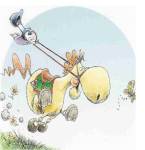
by Julia Felton | Jun 20, 2011
This week’s blog is inspired by Mark Fritz and his weekly quotes in leadership. Recently Mark stated:
“Leadership is influence, and the consistency of our behaviours is what keeps our influence with others high. However, the hardest person to influence is ourselves, as we often ask ourselves “Why am I not able to do it?”. Successful leaders understand that the foundation of their success is built by leading themselves first”.
This statement really made me think as I resonated with it so much. Horses are always looking for a leader to take care of them. Let’s face it being a leader is tough, and few want to do it when others are willing to assume that mantel. However, what is really interesting is that whilst a horse is happy to be a follower he will only remain in that role if he knows the leader is competent and making sound decisions. The minute the leader demonstrates poor decision making and acts in an indecisive way, the horse is forced to take over the leadership role in order to keep himself safe.
This has so many implications for organisations as unlike my horses, employees in organisations cannot assume the leadership role if their boss lacks leadership style. Rather they are forced to stay and keep on operating in the same way, despite the fact they are aware of serious leadership flaws. This made me wonder how those employees feel. I suspect they lack trust in their leader and in fact often get disheartened believing that they could do a better job. How demoralising and demotivating that must be.
The Peter Principle states that:
“We are promoted to our level of incompetence”
So given this fact there must be an awful lot of leaders in business today that are not really happy in that role. In my opinion these “uncomfortable” leaders often lack the charisma and ability to earn respect and instil trust in their teams. What a tragedy this is and for what it is worth in my view many of these people lack these essential management skills as they can’t apply them to their own lives. In my observations of successful leaders these are the ones that have a real focus, desire and passion. They know what they want in their lives and this drive is infectious. It rallies people to support them and as such their tribe grows and grows. They lead by example with passion and committment. They understand that real leaders can’t lead others until they can lead themselves.
Are you leading yourself, the hardest person, or are you letting life lead you. Leadership is not for the faint-hearted. Step up to the mark and claim your power and get a tribe of people following you. Just like my horses want to follow me.
Julia Felton (aka The Business Wrangler) is the founder of Business HorsePower. Business leaders, entrepreneurs and executives hire her to accelerate their business performance by harnessing the energy of their people to work more collaboratively together. By aligning purpose with actions the team achieves exponential results as everyone starts pulling in the same direction.
Julia believes that business is a force for good and through designing purpose-driven businesses that leverage the laws of nature, and the herd, you can create businesses founded on the principles of connection, collaboration and community that make a significant impact in the world.
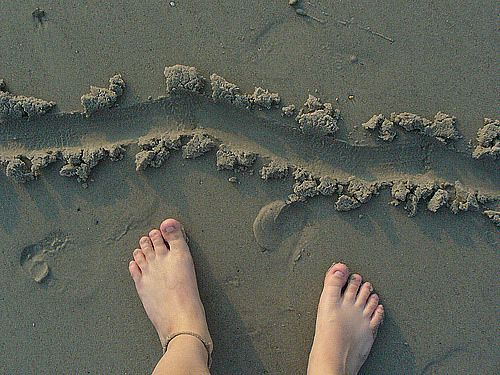
by Julia Felton | Jun 1, 2011
Last week I shared a blog that my mentor Carolyn Resnick had written on boundaries. This is a subject close to my heart and you might recall me writing about my experiences of setting boundaries with my little yearling, Bracken. Increasingly I’m finding more and more of my clients struggling with the issue of setting boundaries. A boundary is a limit or rule you set on how you allow others to treat you. Our boundaries help define who we are and how we want to be treated. They tell others what we will and won’t accept.
When you don’t set boundaries, a bunch of problems show up for you. The first is the problem of anger. If you have problems with feeling angry, resentful or irritated by others much of the time, or if the intensity of your anger is beyond what is really called for by the situation, you probably don’t set and enforce boundaries. Why? Because anger is a normal reaction when someone violates your boundaries. Whether the issue is someone walking all over you and treating badly or just cutting you off in traffic, anger is one of the ways we react when our boundaries have been violated. When you don’t set boundaries, that anger festers, and eventually explodes. (Think of the buildup of pressure in a volcano if you want to know how this works).
The second problem is another emotion–hurt. The emotion of hurt is also a response to having your boundaries violated. If you are someone who feels hurt by others, you probably are not enforcing your boundaries. Whether you are being rejected by others or just have your feelings hurt from time to time, you may not be enforcing your boundaries in a way that tells people how to treat you the way you deserve.
A boundary is like a rule. You are telling others what the rules are about how they act around you. When you tolerate bad behavior, you are allowing others to treat you badly. Usually, you are not enforcing your boundaries. In some cases this ends in physical abuse and actual physical injury. In others, the abuse is verbal and emotional, and the injury is to self-worth and self-esteem. Often it is the very people we love and who claim to love us who violate our boundaries in the worst ways. We don’t do ourselves or them any favors when we tolerate it.
Love certainly complicates boundary issues. Often people erroneously believe that if they love someone they don’t have to set boundaries. They may believe that they shouldn’t ever say “no” or that they should share everything. Wrong. It is important to set boundaries with those we love. Think for a minute about your children or your horse. Despite the fact that you love your 3 year old, you won’t allow him to have chocolate instead of meals, stay up all night or choke his baby sister. Your love for him makes you set boundaries on how he behaves. The same is true for your horse. Not setting boundaries allows your horse to walk all over you and this can become dangerous.
To tackle boundary issues, first of all, we need to be willing to set boundaries. We need to be willing to tell others how we want to be treated. But it isn’t just how we want to be treated. For us to set boundaries, we need to communicate that the boundary is about how we demand to be treated. For some people, telling them is enough. They may have violated your boundaries because they didn’t know how you wanted to be treated. They didn’t know what was important to you. Once you tell them, they do their best to comply.
But sometimes you can set boundaries, and others won’t respect them. In those cases, you have to enforce them. What that means is that you have to stand firm. Just as when your child throws a temper tantrum in the grocery store to get a candy bar, people in your life will “temper tantrum” about your boundaries. They do this by ignoring them, or by telling you how unreasonable you are to have set them in the first place. They hope that you’ll give it up and let them do what they want to do. Sometimes they use “emotional blackmail,” trying to make you think that they won’t like you if you enforce those boundaries. But you have to do it anyway.
One important thing to know is that you don’t have to get angry when you enforce your boundaries. You can simply make statements. “I don’t like it when you____________.” “I’m not going to stay here and allow you to treat me this way.” “It isn’t OK to do that.” You need to be firm, but you don’t have to shout or be angry. If you feel determined about setting your boundaries and making them stick, other people will understand that you mean it and that you will follow through.
After all, that is what setting and enforcing boundaries is all about–following through and demanding that others treat you the way you want to be treated.
Adapted from Linda Pucci – Inner Resources
Julia Felton (aka The Business Wrangler) is the founder of Business HorsePower. Business leaders, entrepreneurs and executives hire her to accelerate their business performance by harnessing the energy of their people to work more collaboratively together. By aligning purpose with actions the team achieves exponential results as everyone starts pulling in the same direction.
Julia believes that business is a force for good and through designing purpose-driven businesses that leverage the laws of nature, and the herd, you can create businesses founded on the principles of connection, collaboration and community that make a significant impact in the world.
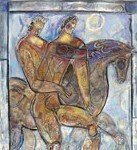
by Julia Felton | May 25, 2011
The way I see it, women approach leadership and horses a lot differently than men do. As children in our imaginary games riding Pegasus, Pegasus reads our minds and takes us to enchanted places. Girls are attracted to Pegasus from their desire to experience a magical connection through a magical ride; while boys grab their broomstick, and ride to a destination that they tell their imaginary horse to go.
My method address horses more like a woman of course because I am wanting a relationship with a horse more than any service I might get from the horse. The service I do receive from the horse is a way to enjoy our connection from a co creative process. It turned out that in competition, my method could hold up to any other method that was not interested in developing a friendship from the training process.
I have seen methods that are driven by a dominant approach through a masculine energy develop friendship with a horse, but the horse had to give up the ability to say “no,” or the power to change the subject, or have any say in the matter of his training at all. The masculine intent was not to abuse the horse in the best of circumstances, but never considered the relationship with a horse as a love interest that women do.
This caused a lot of woman to become unsatisfied with how horse training methods were applied to horses. The fact was that there was no choice in the matter if you were the horse.
It did not satisfy me. I see the treatment of horses to be abusive even in the nicest approach. The reason is that the method is brought to the horse whether the horse wanted it or not.
Masculine energy uses directive leadership and feminine energy uses supportive leadership. Women prefer not to get involved with leadership if they can help it, which is too bad because women are very good in the leadership role if they give their self half a chance.
Women understand something that men still need to consider- and that is leading a horse is part of a co creative process. They also believe that this co creative process is capable of producing the best performance. And that for leadership to really work out- you will need to follow your horse more than you will be leading him in the beginning to create a bond and a willing partner. Once you get this done, a horse will do just about anything for you without a lot of manipulation to get him to do it.
Where women fail to connect with a horse is created from their not understanding how to set up clear boundaries. It is a puzzle piece that is the missing ingredient in feminine energy. A woman has a tendency not to know when to allow, when not to allow, what to allow, what not to allow -and that to gain leadership and respect, boundaries must be flexible to be able to train the horse to have a desire to follow your lead over his own. How I do this through my Waterhole Rituals is by empowering a woman through many activities surrounding intimate interactions with a horse because that is when women are most comfortable. We are all about the bond and the heart felt connection. After we have made this connection, we can do just about anything -just from our natural instincts as supportive partners which comes very naturally to us.
When a woman learns how to gain leadership from using flexible boundaries she finds that leadership isn’t something she needs to demand from a horse. Once the boundaries are understood, horses have a strong desire to naturally follow your lead. This is very simple really. This is achieved from the horse working around your wants and needs that take place in regards to you personal space, and how you are feeling in the moment. Horses and women know how to work around each others needs in a partnership.
I have seen that when a woman learns that she is solely responsible for her own personal control of her personal space that all of a sudden, she sees how to use this way of being into her relationships in her life, and in affairs of the heart. She begins to turn the table on her life, and receive more respect and better treatment in all relationships. It is just a small puzzle piece we need to gain.
Masculine and Feminine and Vice Versa
In human beings there is both male and female energy. To really have the optimum dance with a horse requires that those energies are in balance, and used in a positive way. Both energies need to work at the appropriate times supporting each other in leadership. A horse needs a much higher percentage of female energy than male energy. However, as the relationship grows to a fine art of dancing, male energy creates the ultimate dance when the desire to be led, and to dance is the complete focus of the horse.
In Closing
We are all puzzle pieces and we need each other to be fulfilled. I believe what I have to offer is strengthening feminine empowerment through feminine leadership by giving women the ability to know what to allow and what not to allow, when to allow and when not to allow. Women by their nature are missing this puzzle piece to be truly empowered in the world of business and affairs of the heart. A woman’s power lies in their innate knowledge that leaders must follow the follower more than the follower ever needs to follow the leader in order to reach harmony in a working partnership.
There is a formula to a working partnership where both male and female energy create the perfect world. My understanding is that the map that you follow is the formula to achieving your goals. There are patterns to be followed that lead to goals. These patterns are thrown out because of people wanting short cuts. Our journey needs to always be a study and lessons of our personal growth as we are reaching for our goals. This way, the journey stays sacred, and our ethics and morals and our heart are not destroyed by the goals that we set for ourselves. We are now out of balance. We now are aware that we are. Horses show us where fairness lies and guide us to our strengths and our missing parts and show us how to obtain our goals for the ultimate connection we are longing to achieve when we give them freedom to be who they are to lead us there.
Posted by my equine mentor Carolyn Resnick on www.carolynresnickblog.com
Julia Felton (aka The Business Wrangler) is the founder of Business HorsePower. Business leaders, entrepreneurs and executives hire her to accelerate their business performance by harnessing the energy of their people to work more collaboratively together. By aligning purpose with actions the team achieves exponential results as everyone starts pulling in the same direction.
Julia believes that business is a force for good and through designing purpose-driven businesses that leverage the laws of nature, and the herd, you can create businesses founded on the principles of connection, collaboration and community that make a significant impact in the world.

by Julia Felton | May 6, 2011
So apologies for not blogging much (at all) last month but time just seemed to fly by. With the weather improving I have managed to spend more time with the horses and as usual they have been teaching me more lessons than sometimes I wanted to learn.
The first lesson I have been reminded of by my horses is for the need to plan ahead (perhaps if I had done that I might have managed to get in the odd blog). Last month my horses threw me a few curve balls by all getting sick at the same time when I was away teaching in Dorset. Maybe if I had had some contingency plans(a Plan B) things would have been less stressful for us all. When faced with challenges such as I experienced my practical side takes over and I just get on with things, but what I was reminded of is how for others that transition is not so easy. They find it difficult to move to plan B and whilst I moved there quite effortlessly my inability to communicate clearly to them made this transition challenging. Maybe if I had planned ahead more, then things would have been easier for everyone.
I recently came across this acrostic from John C. Maxwell regarding the importance of planning ahead which I just love.
P – predetermine your course of action
L – lay out your goals
A – allow time for adjustments
N – notify key personnel
A – allow time for acceptance
H – head into action
E – expect problems
A – always point to the positive
D – daily review
I think this sums up so brilliantly the best way to approach anything in life. Particularly it reminds me that we should expect problems. That’s normal but all too often we get discouraged and give up. Focus on the positive at all times because when we are immersed in a project we all too often forget to acknowledge all the success that we have had along the way. A daily review is a great way to keep on track but at the end of the day all great plans will stay that way unless you take action. I’m reminded of John Assaraf once telling me “are you taking action Julia or are you living on hopeium”. We are hope for anything we want but unless we take action to translate those plans into something nothing will change.
So my question for you today is are you living a Hopeium Life or are you taking action to PLAN AHEAD. As always comments are welcome.
Julia Felton (aka The Business Wrangler) is the founder of Business HorsePower. Business leaders, entrepreneurs and executives hire her to accelerate their business performance by harnessing the energy of their people to work more collaboratively together. By aligning purpose with actions the team achieves exponential results as everyone starts pulling in the same direction.
Julia believes that business is a force for good and through designing purpose-driven businesses that leverage the laws of nature, and the herd, you can create businesses founded on the principles of connection, collaboration and community that make a significant impact in the world.
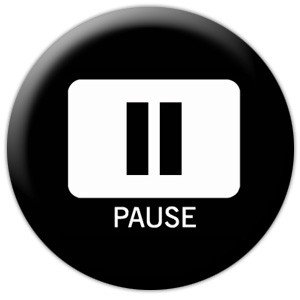
by Julia Felton | Mar 30, 2011
As Spring breaks, the days get longer and daffodils begin to blossom I am reminded of the first time I learnt about the concept of expansion and contraction from Chris Attwood at the Masters Gathering in San Diego in June 2009. In essence what Chris said is that at every point in life there are expansion and contraction points. Just think of the seasons. Spring and Summer are the seasons of expansion (growth and development) whilst Autumn and Winter are seasons of contraction (of slowing down and resting). Just like the Ying Yang one can’t exist without the other and so it is in business.
There are times when your business flourishes and grows and times when it stagnates (to recuperate and rest). The challenge for most of us is when the contraction happens we give up, but this is just one of nature’s cycles. Roger Hamilton summarises this analogy in his book “Wink”. There is a season for planting and a season for reaping. Furthermore, he goes on to discuss the Law of Gestation. The seeds you plant must be given time to develop and mature before you can harvest them. How often in business do we get impatient and reap too early? I know I do. So as we move into Spring consider your business life cycle and make sure you don’t pull up your seeds before they are ready.
Recently I have been rather busy and not paying my lovely ponies Bracken and Thistle the attention they deserve. I’m been rushing, never stopping – acting in an expansive state. The one sure thing that Thistle has been teaching me is to slow down and wait. What I cause the pause. She does this by stopping when I lead her to the field. She just plants her feet and refuses to move until I slow down. The more I try to encourage her forward the more stubborn she becomes. I now realise if I pause (take a breath) and wait she will then move forward. So leading her has become a game – like the ebb and flow of the sea.
All too often in life out of desire for instantaneous results and goal orientation means that we fail to pause. To survey what is around us and reflect on what is happening. Thistle has been teaching me the value of this because it is in the pause that great magic can occur. How and when will you pause today?
Julia Felton (aka The Business Wrangler) is the founder of Business HorsePower. Business leaders, entrepreneurs and executives hire her to accelerate their business performance by harnessing the energy of their people to work more collaboratively together. By aligning purpose with actions the team achieves exponential results as everyone starts pulling in the same direction.
Julia believes that business is a force for good and through designing purpose-driven businesses that leverage the laws of nature, and the herd, you can create businesses founded on the principles of connection, collaboration and community that make a significant impact in the world.
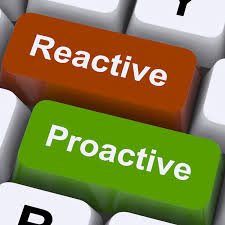
by Julia Felton | Mar 10, 2011
Last night I attended an amazing Scanners event hosted by John Williams and Selina Barker – if you have never been along I would thoroughly recommend it, especially if like me you have loads of ideas but can’t seem to get started on any. One of the subjects we were discussing was time management. Now you might think this is a boring topic but not the way that John and Selina describe it. If like me the thought of getting started on a new project is so over-whelming that you never start, then Selina gave us this great idea. She called it Micro-Blocking and the premise is that if you clear your diary for 20 mins and just work uninterrupted on that one thing you will be amazed at how much you can achieve. You see, 20 mins is achievable for most of us, and usually it is the getting started that is the problem. So if you think you only have to do the task for 20 mins you are more likely to commit to this – and as we all know some action is better than no action.
One of my challenges however, having put that appointment in the diary with myself is actually keeping it. Just writing this blog is taking me way too long as I am continually being interrupted. Whose fault is that? Selina summed this up well by saying are you being pro-active in managing you life or are you being re-active and just responding to the environment around you. I remember well one of my coaches saying that you create the environment around you. Here I am creating an environment of chaos by being so reactive.
So what does this have to do with Horse Lessons for Life? Well it reminded me of the question on the home page of my Equine Inspired Leadership website “Are you leading your life or is your life leading you?” We all have the ability to be leaders of our lives and yet few of us do. We allow ourselves to become wrapped up in the situation around us, re-acting to everyone elses stuff and not taking control of our own destiny. Horses show us how to be leaders of our own lives and give us feedback on how we are doing. I discussed how they do this in a previous blog.
So for today please let me know whether you are leading your life and being pro-active or is your life leading you as you react to the circumstances surrounding you.
Julia Felton (aka The Business Wrangler) is the founder of Business HorsePower. Business leaders, entrepreneurs and executives hire her to accelerate their business performance by harnessing the energy of their people to work more collaboratively together. By aligning purpose with actions the team achieves exponential results as everyone starts pulling in the same direction.
Julia believes that business is a force for good and through designing purpose-driven businesses that leverage the laws of nature, and the herd, you can create businesses founded on the principles of connection, collaboration and community that make a significant impact in the world.

by Julia Felton | Mar 6, 2011
You know when you hear something more than once in a few days you really should check in it, well that’s just happened to me. On Thursday at the Academy of Chief Executives Mark Fritz was talking to us About the Power of Ownership in Leading Across Distances and Cultures and during his amazing seminar he told us we should check out a TED video by Simon Sinek on Leadership. Then I find out my friend Jezz Moore, from Moon Cow, has tweeted the same thing. Synchronicity working or what, but given I’ve been hit with with twice in as many days I felt compelled to watch the video. You can see it here at:
http://www.ted.com/talks/simon_sinek_how_great_leaders_inspire_action.html
What inspired me most about this video was the fact that we all need to begin with our WHY. For the last few years I’ve been told by many mentors and coaches that WHY is the most important thing. When you are clear on your WHY then all subsequent actions like HOW and WHEN will fall into place. Personally, I’ve been struggling to find my WHY – although day by day it becomes clearer. One of my coaches has told me that reason for my inaction is that WHY is not strong enough. One thing that I have observed is that many of the great teachers and successful business people in this world have really strong WHY’s, in many cases driven from a state of despair due to financial ruin or serious health concerns. I find it kind of sad that it takes a serious personal experience for people to become clear on what their WHY is. Surely we don’t need to all reach these depths of despair to be successful.?
What Simon Sinek so clearly articulates in this video is the Golden Circle that starts at the centre with WHY, then contains another concentric circle with HOW and finally a concentric circle with WHAT.

Sinek suggests that really successful organisations and people (such as Apple) start with their WHY. They inspire others to do business with them because they have the same beliefs. Apple do not pitch their advertising based on WHAT they do but rather WHY they do it. This is why they can sell computers, phones and music and no-one doubts the authenticity of the company. Compare this to Dell who like many other companies focus their advertising strategy of the WHAT. Dell make computers and now we are so embedded with the fact that this there is core competency that we can’t conceive of purchasing same a phone or and MP3 player from them.
Furthermore Sinek goes on to explain that purchasing decisions are based on biology not psychology and that the WHAT appeals to the neo-cortex of the brain which controls rational thought whereas the WHY and HOW align with the limbic system The limbic system is concerned with trust and loyalty and decision-making that drives behaviour. So by appealing to a consumers WHY you instantly put them in a place where the buying decision can be influenced by the limbic brain.
So how does this lead onto today’s lesson from the horses. It is just that when a horses meets you he is asking three things:
- who are you
- what do you want; and
- how do you operate.
In this way he is concerned with what is happening in our limbic brain. A horse is also always looking to us to determine our ability to lead. Are we trustworthy and reliable? From this state of why the horse can quickly make that decision on how best to interact with us. Maybe this is why horses are so good as Teachers. They make sure we stay out of our thinking, rational neo-cortex brain and force us to be congruent with who we really are. They challenge our WHY and who we think we are. Invariably in coaching sessions clients have AHA experiences as they realise who they thought they were and how they are acting are incompatible. Horses challenge our WHY are therefore our integrity and congruence and since they are non-judgemental they just feed back what they experience. It can be an eye-opening experience for most people.
So for today spend some time considering what is your WHY. Why are you on this earth and what is your purpose in life. If you need some help here some great resources that I have found really helpful are The Passion Test by Chris and Janet Attwood and Success DNA Detector which can be found on http://www.authorityformula.com/
I’d love to hear your comments below on what your WHY is.
Julia Felton (aka The Business Wrangler) is the founder of Business HorsePower. Business leaders, entrepreneurs and executives hire her to accelerate their business performance by harnessing the energy of their people to work more collaboratively together. By aligning purpose with actions the team achieves exponential results as everyone starts pulling in the same direction.
Julia believes that business is a force for good and through designing purpose-driven businesses that leverage the laws of nature, and the herd, you can create businesses founded on the principles of connection, collaboration and community that make a significant impact in the world.
















